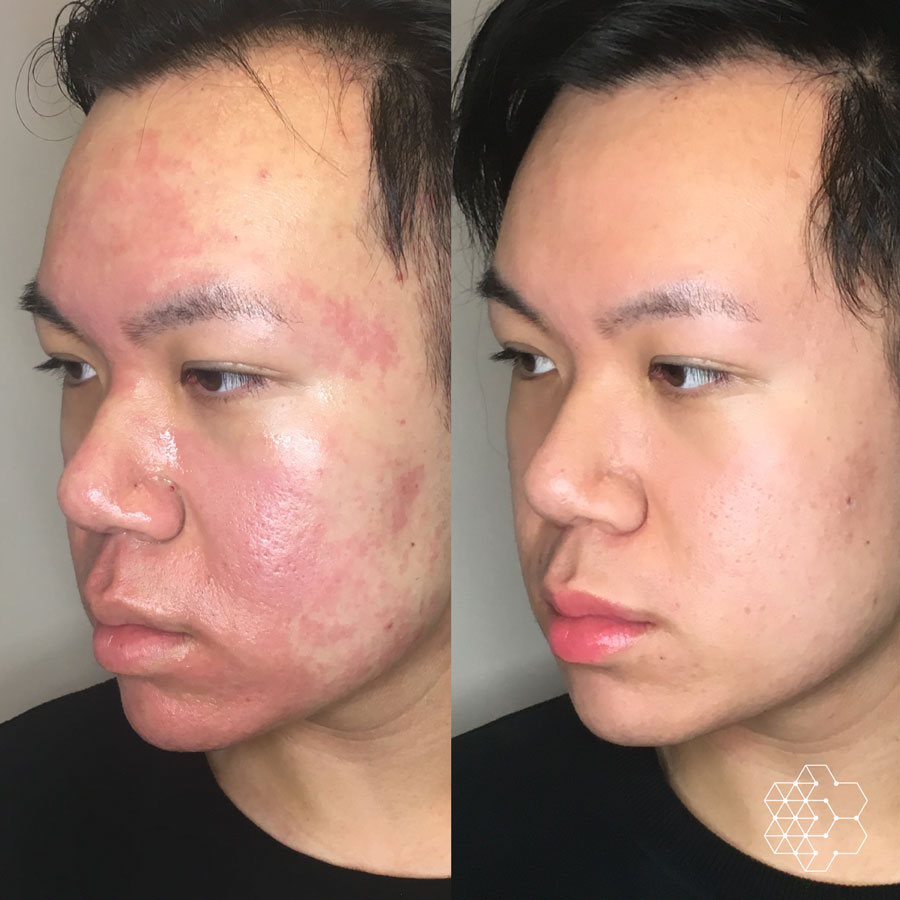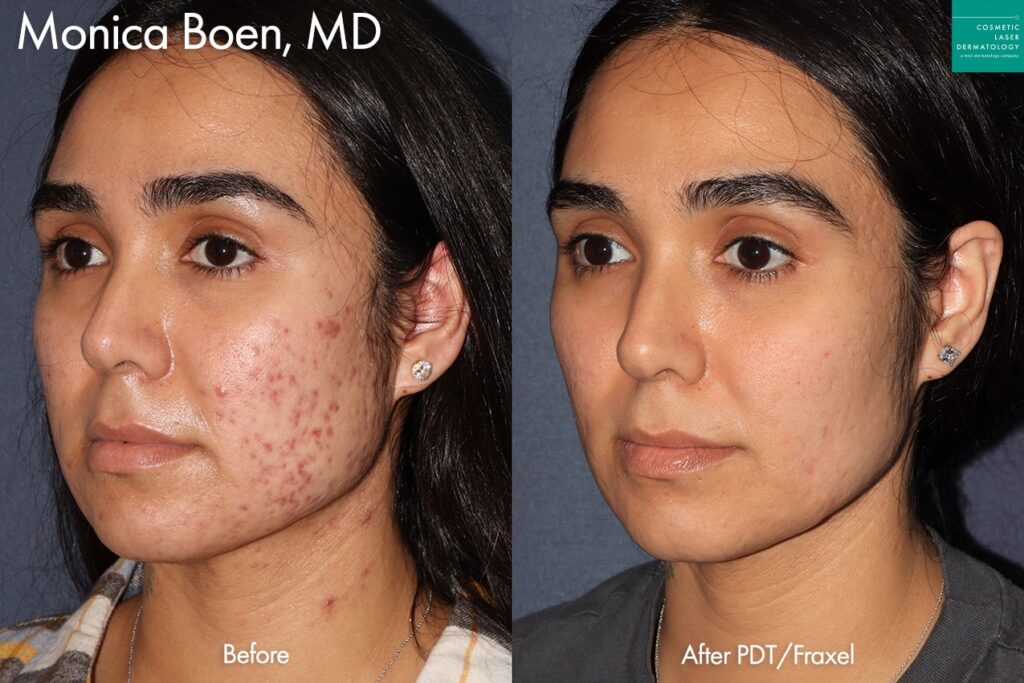Targeted Acne and Acne Scars Treatment: Recover Your Clear Skin
Targeted Acne and Acne Scars Treatment: Recover Your Clear Skin
Blog Article
Discovering Skin Problem: Dealing With and determining Acne Scars for Healthier Skin
Acne scars stand for a significant problem for people seeking to keep healthy skin, as they can influence both appearance and self-confidence. Comprehending the numerous types of marks, from atrophic to hypertrophic, is necessary for determining appropriate therapy options.
Comprehending Acne Scars
Understanding acne marks is vital for anybody that has actually experienced extreme acne, as these marks can have a long-term effect on both physical look and mental wellness. When the skin undergoes inflammatory reactions during energetic acne lesions, acne scars develop. The extent of scarring is typically affected by variables such as the sort of acne, its duration, and individual skin qualities.
The body's all-natural recovery procedure can cause either atrophic marks, which look like clinical depressions in the skin, or hypertrophic scars, which are raised and result from overproduction of collagen. Furthermore, the mental toll of acne scars must not be taken too lightly; several people report sensations of shame, anxiety, and reduced self-confidence. This psychological problem can affect social interactions and general lifestyle.
Attending to acne scars requires a detailed understanding of their formation and effect. Recognition of the capacity for long-lasting effects related to without treatment marks can inspire people to look for proper therapies. Early intervention and efficient administration methods can substantially improve skin appearance and boost emotional durability, emphasizing the importance of understanding the intricacies surrounding acne scars.
Sorts Of Acne Marks
Acne scars can be categorized right into distinctive kinds, each displaying distinct qualities and requiring particular treatment strategies. The key sorts of acne scars include atrophic, hypertrophic, and keloid scars.

Hypertrophic marks, in contrast, are increased over the skin degree and are the result of extreme collagen manufacturing throughout the healing process. They commonly remain within the limits of the initial acne sore. Keloid scars are similar however expand beyond the original injury site, creating larger, elevated areas that can be scratchy or unpleasant.
Comprehending these sorts of marks is essential for selecting suitable treatment choices. Different scars may respond much better to details treatments, such as laser therapies, fillers, or surgical interventions, emphasizing the importance of a tailored approach to acne scar management.
Identifying Your Scars
When assessing the appearance of your skin, it is important to precisely recognize the kind of marks existing, as this will certainly educate one of the most effective treatment technique. Acne scars normally drop right into two classifications: hypertrophic and atrophic scars. Atrophic marks, which are the most typical, look like clinical depressions or impressions on the skin. These can further be classified right into ice-pick marks, boxcar scars, and rolling scars, each showing distinctive attributes and needing different approaches for analysis.
Hypertrophic scars, on the other hand, are raised and occur due to extreme collagen manufacturing throughout the recovery procedure. Recognizing the particular features of your scars-- such as width, depth, and structure-- is necessary for proper recognition. Additionally, take into consideration the distribution of scars throughout your skin, as this can suggest the seriousness and duration of the acne condition.
Engaging with a dermatologist can supply important understandings into the nature of your marks, aiding in the distinction in between numerous types. A detailed understanding of your scars will eventually bring about a more customized and effective therapy plan, making sure a more clear and healthier skin.
Treatment Alternatives Available
Recognizing the particular kind of acne scars existing on your skin prepares for discovering reliable therapy options. Typical kinds of acne marks consist of atrophic (clinically depressed), hypertrophic (increased), and post-inflammatory erythema.
For atrophic scars, choices such as chemical peels, microneedling, and laser resurfacing are commonly utilized. Chemical peels off use acids to remove the outer layer of skin, promoting new cell growth. Microneedling involves tiny needles that create micro-injuries, promoting collagen manufacturing. Laser resurfacing targets harmed skin cells, boosting appearance and tone.
Hypertrophic scars can be treated with corticosteroid injections to flatten the scar or laser therapy to minimize inflammation and boost appearance. acne treatment for sensitive skin. Silicone gel sheets and stress dressings might additionally aid in taking care of elevated marks
In enhancement, facial fillers can momentarily fill out clinical depressions from atrophic marks, while medical click to read excision might be Look At This ideal for severe cases. Each treatment choice has its advantages and considerations, making it important to seek advice from with a dermatologist. They can offer individualized suggestions based upon the kind and intensity of your marks, along with your skin kind and general health and wellness.
Tips for Avoidance
Reliable prevention approaches can dramatically decrease the chance of establishing acne marks. Making use of non-comedogenic products assists prevent stopped up pores, which can aggravate acne.
Avoiding the impulse to stand out or pick acne sores is essential, as this can lead to deeper skin damages and enhance the danger of scarring. Instead, take into consideration using a chilly compress or over-the-counter therapies to lower swelling and soreness.
Sunlight security is an additional essential aspect of prevention; ultraviolet (UV) rays can dim marks and prevent the healing process. Applying a broad-spectrum sunscreen with a minimum of SPF 30 daily can shield the skin and promote even healing.
Lastly, keeping a balanced diet rich in minerals, antioxidants, and vitamins supports skin wellness and healing. Staying hydrated and managing stress and anxiety degrees can also play a considerable function in reducing acne flare-ups. By executing these approaches, individuals can dramatically lessen their possibilities of developing acne scars.

Conclusion
To conclude, understanding and recognizing acne scars is vital for reliable treatment Get More Info and accomplishing much healthier skin. Different sorts of acne scars, including hypertrophic and atrophic marks, necessitate particular treatments tailored to individual requirements. Therapy options variety from chemical peels and microneedling to corticosteroid shots, stressing the importance of seeking advice from a skin specialist. In addition, taking on a gentle skincare routine and safeguarding the skin from UV direct exposure can dramatically add to the prevention of further scarring and overall skin health and wellness.
The body's natural recovery process can result in either atrophic scars, which appear as depressions in the skin, or hypertrophic marks, which are increased and result from overflow of collagen. They are additional divided into 3 subtypes: ice choice scars, boxcar scars, and rolling scars. Acne marks usually fall right into two classifications: atrophic and hypertrophic marks. These can better be categorized into ice-pick scars, boxcar scars, and rolling scars, each exhibiting distinct qualities and requiring different techniques for assessment.
Numerous kinds of acne marks, including atrophic and hypertrophic scars, require specific treatments customized to specific requirements.
Report this page